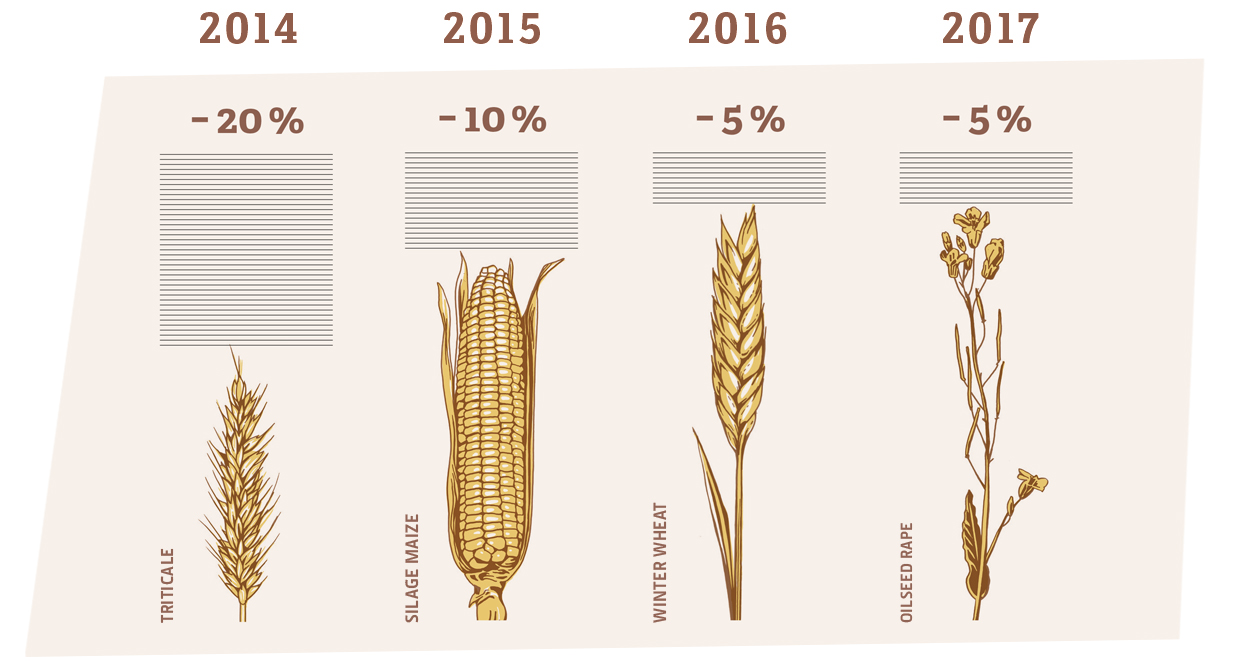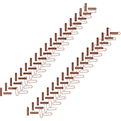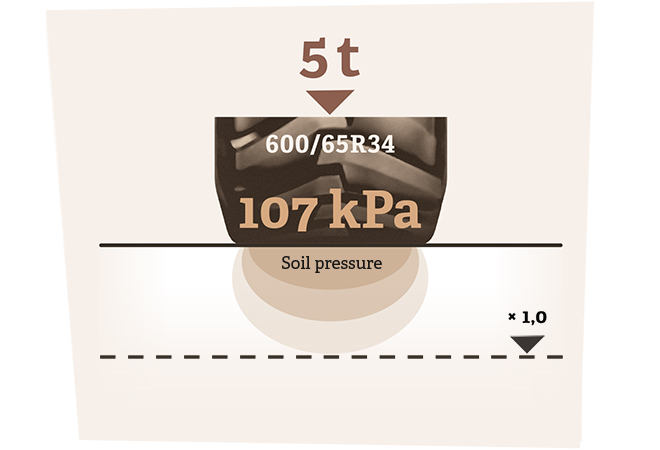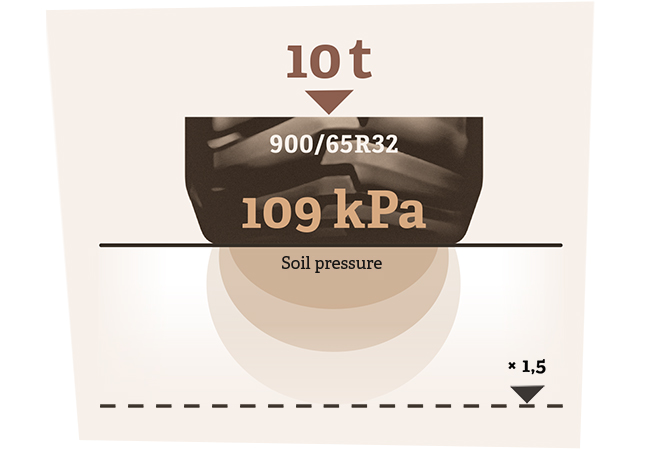LONG-TERM LOSS OF YIELD OF COMPACTED AREAS COMPARED WITH NON-COMPACTED REFERENCE AREAS
In Reckenholz, Switzerland, a study by the Swiss Agroscope Institute and ETH Zurich is investigating the long-term effect of soil compaction on productivity. In 2014, trial areas were compacted under wet soil conditions with a machine weight of 32 t and high tyre pressure in order to be able to measure yield changes in the course of crop rotation. In addition, the oxygen and CO2 content, water and gas exchanges and biological activity in the soil were investigated in subsequent years. The results show that the soil has not recovered several years after compaction. Losses in yield remain consistent. This is due on the one hand to subsoil compaction, which can hardly be influenced by machines, and on the other hand to the topsoil, which has not regenerated in four years despite repeated ploughing.

FACTORS INFLUENCING COMPACTION

Axle load

Number of
passes on the field

Soil moisture

Soil pressure in
contact area

Number and
type of tyres

Soil type
and structure
COMPACTION IN DEEPER SOIL LAYERS IS HARD TO MANAGE
Using wider tyres, total load can be almost doubled without increasing soil pressure on the surface. However, the pressure reaches much further down.


Total weight of machinery
300 t
Total weight of machinery used in a biogas crop rotation over three years.
SOIL DEGRADATION FROM COMPACTION (MILLION HA)
 33Europe10Asia4Australia18Africa3Americas
33Europe10Asia4Australia18Africa3Americas
Compaction risk of European soils
36 %
Percentage of European soils with
high or very high compaction risk.
Sources: FAO, Inra, Europäische Umweltagentur, Thomas Keller / Agroscope, Terranimo, Northern Illinois University, Biogas Forum Bayern

